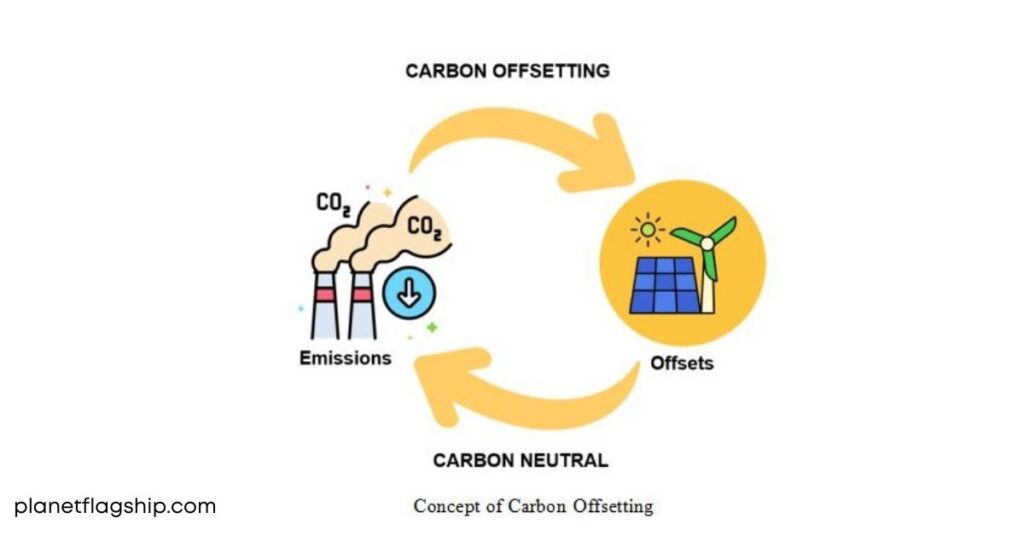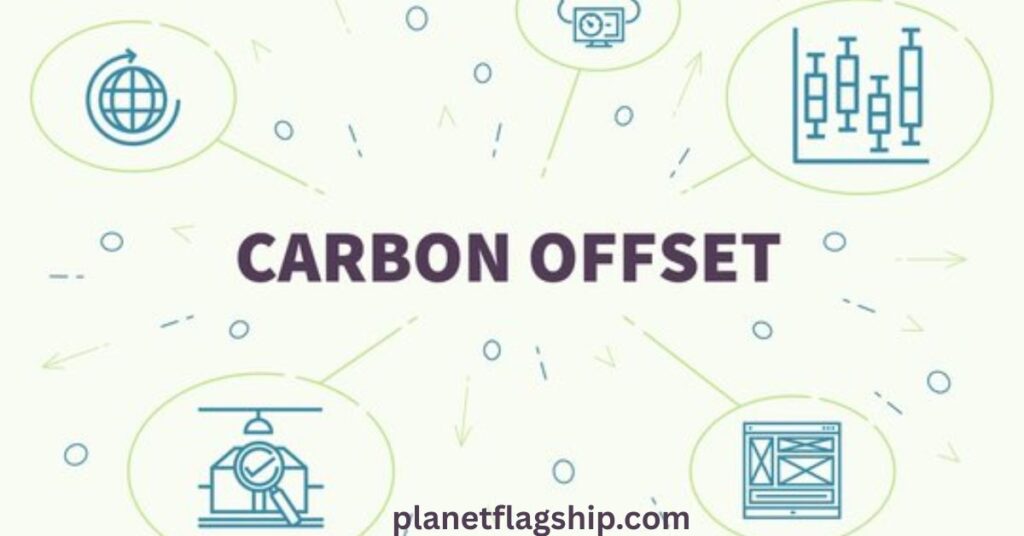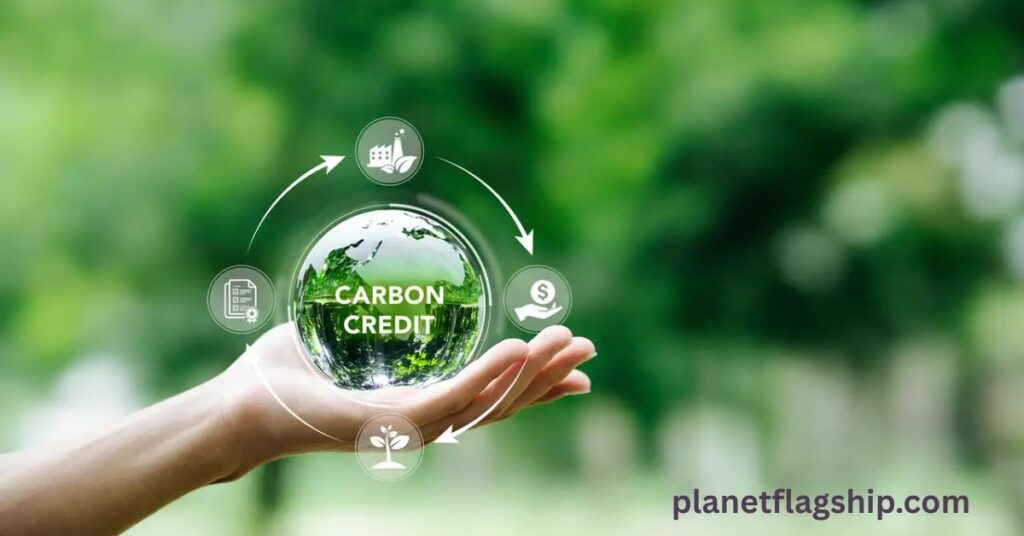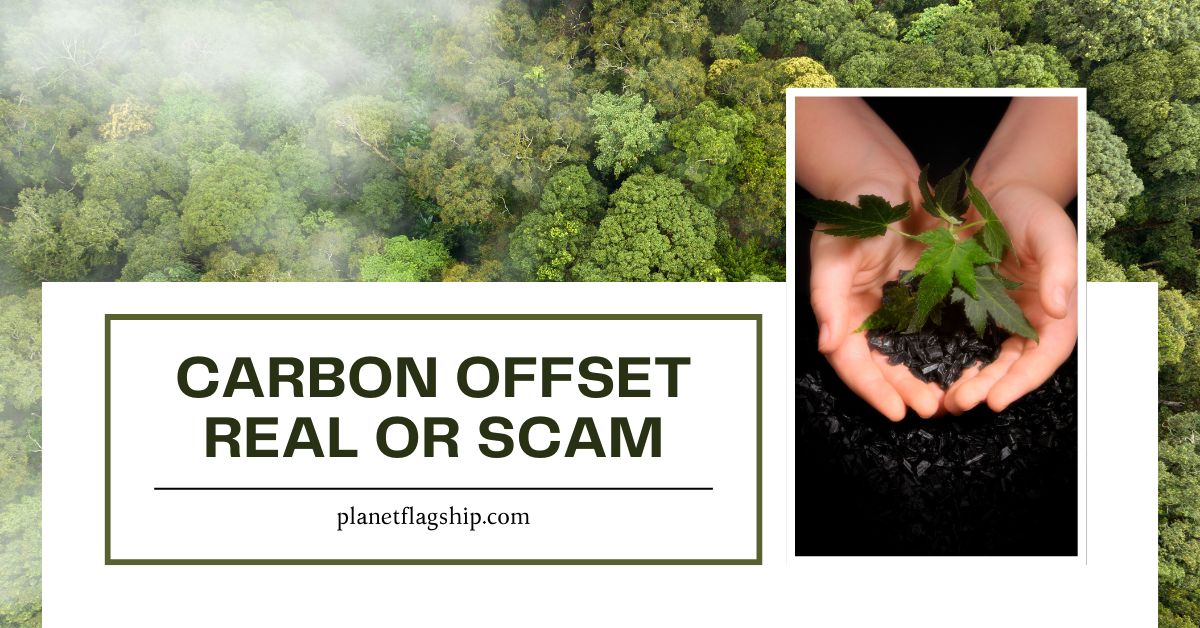Introduction
With the entire global community ramping up campaigns to combat climate change, carbon offsetting has become a popular strategy employed by corporations and individuals alike to mitigate their carbon footprints. Emitters can, by this logic, justify their emissions by funding projects (such as reforestation) that claim to reduce or capture greenhouse gas emissions. Many organizations, including large airlines, fashion houses, and tech companies, have adopted this approach.
Nevertheless, the effect and veracity of carbon offsetting are increasingly being questioned. Critiques that draw attention to the failure of many offset projects to achieve genuine emission reductions may be considered greenwashing, allowing companies to continue their old business practices with the free pass of environmental concern. Problems have been raised regarding the lack of standardization, transparency, and potential social and environmental abuses in some offset programs.
This article examines the complexities of carbon offsetting, including its mechanisms, effectiveness, and the controversies surrounding its use. By considering the pros and cons of carbon offsetting, a nuanced perspective is presented on whether carbon offsetting is a legitimate tool in the battle against climate change or merely a deceptive tactic that hinders genuine progress.
Understanding Carbon Offsetting

Carbon offsetting refers to a plan to reduce or eliminate emissions of greenhouse gases (GHG) by either reducing such emissions or capturing them through investments in carbon offset projects. The underlying principle is simple: If you release one ton of CO₂, then you can “neutralize human CO₂ by preventing the emission of that much CO₂ anywhere else or removing that much CO₂ from the atmosphere.
Attributes to donors include afforestation and reforestation, the development of renewable energy sources (such as solar and wind farms), the capture of methane from landfills, and the development of improved cooking stoves that reduce fuel consumption and emissions. The voluntary carbon market (VCM) has matured rapidly in recent years, with companies such as Microsoft, Google, and Delta Air Lines committing to carbon neutrality through the purchase of offsets (Battocletti et al., 2024).
What makes carbon offsetting so widely embraced?
The attractiveness of carbon offsetting is reflected in its flexibility and affordability. This is a means for companies unable to eliminate emissions (particularly in aviation, heavy industry, or agro-industry) to transition from non-annihilation policies towards meeting the goal of global carbon neutrality without having to retool their infrastructures.
Offset purchases are thus also quite inexpensive compared to direct emission reductions, and they are therefore suitable for use in marketing green credentials without any significant investment (Hakovirta, 2023).
ALSO READ: How Youth Activists Are Leading the Fight for Climate Change?
The Argument for Carbon Offsetting

Connecting Towards a Sustainable Future
According to many specialists, offsetting can serve as a useful transitional measure on the path to net-zero emissions. Although decarbonizing energy systems and industrial processes requires time and ingenuity, offsetting provides a means to neutralize unavoidable emissions in the meantime (Rayer et al., 2022).
Advantages for Local Communities
Adaptively designed offset projects can have socio-economic and environmental benefits for developing regions. For instance, reforestation projects can help with biodiversity and soil erosion (Di Sacco et al. 2021). Clean cooking technologies can improve air quality and reduce health hazards. Offsets can be associated with several Sustainable Development Goals (SDGs), including access to clean energy, poverty reduction, and climate action.
Encouraging Climate Investment
The offset markets provide economic benefits for investing in low-carbon technologies and conservation activities that would otherwise lack sufficient funding. For example, habits such as conserving forests or practicing sustainable land use may be facilitated when locals can reap financial gains in the form of carbon credits.
Are Offsets Effective?
Numerous investigations have raised doubts about the integrity of carbon offset projects. According to Filewod and McCarney (2023), most of these forest-based offsets exaggerate their carbon sequestration. A study by Greenfield (2023) found that more than nine in ten rainforest carbon offsets certified by Verra, a leading standard, were likely “phantom credits” that did not reflect real emission reductions. One of the critical problems is “additionality”—the concept that such emissions reductions would not have happened without the intervention of the offsetting project. If nobody ever faced the risk of a forest being cut down, then saving it cannot be considered an additional benefit to the environment.
Stability and Escape
Another issue is the permanent storage of carbon. Today’s trees may dry up, die, or be lost to future deforestation, thereby releasing the stored carbon back into the atmosphere. Additionally, when protecting one forest, “leakage” may occur if logging is relocated to another area, thereby nullifying the benefits.
Greenwashing Phenomenon
Carbon offsetting is regularly criticized for being the enabler of the greenwashing phenomenon—the cover-up of seemingly taking climate actions while disregarding business as usual. For instance, a company might choose to spend its money on low offsets from dubious projects rather than investing in clean technologies or cutting its operational emissions. Offsetting provides polluters a “license to emit,” which can hold up the required fundamental changes. Critics argue that the term can be used as a smokescreen for inaction on climate mitigation.
Insufficient Control and Supervision
The regulation of the voluntary carbon market is not stringent, and therefore, the project quality and certification standards are inconsistent. Even if organizations such as Verra and Gold Standard seek to provide credibility, the oversight is quite diverse in terms of regions and types of projects. Much of the time, offsets are sold without much transparency or verification by third parties, eroding credibility in their veracity. Furthermore, there is no global registry for offsets, which results in the risk of double counting, where the order from two entities is counted for both entities’ emissions.
Societal and Moral Aspects
The offsetting efforts have triggered criticism from Indigenous people and local rural communities, who believe that they have not been consulted over the arrangements or that they have been evicted. The grabbing of land in the guise of reforestation or conservation has become a source of questions regarding the ethical issues behind carbon offsetting.
Offset projects that are not community-inclusive or -oriented not only run the risk of social injustice but also the risk of being non-viable in the long run. Sustainable climate solutions have to be participatory, equitable, and locally owned.
Fairness and Accountability
Offsetting also carries doubts relating to the issue of environmental justice. Wealthy states and corporations can afford to compensate for their emissions, but poor communities often bear the brunt of climate change’s effects. According to critics, offsetting allows the rich to continue polluting while imposing environmental costs on the developing world. Climate justice proponents argue that those who contribute the most to emissions should focus on reduction rather than compensation. Carbon offsetting, in this sense, can exacerbate global inequalities instead of alleviating them.
Enhancing Carbon Offsetting: Strategies and Advancements

To address credibility concerns, efforts are being made to enhance transparency and honesty in the carbon market. The ICVCM is working to develop foundational carbon principles and standardize project assessments. Enhancing the disclosure of project details, third-party verification, and public registries can increase accountability. Other complex systems, such as satellite imagery and blockchain, are also being considered as carbon removal trackers to eliminate double-counting.
Offsets Based on Technology vs. Nature
There is often an accepted distinction between nature-based solutions, such as afforestation, and technology-based solutions, such as direct air capture or carbon mineralization. Although nature-based offset is the more popular approach, technology-based measures could prove meaningful for more long-term carbon removal, even at a cost. Governments and the private sector are increasingly committing to such technologies as part of their net-zero initiatives, implying a future where offsetting is more evidence-based and measurable.
The Transition to “Carbon Insetting”
Some firms are now embracing the concept of “carbon insetting,” i.e., making investments in projects that reduce emissions within their supply chains. This strategy enhances accountability, makes climate action a business entity, and can translate into more comprehensive improvements in the environmental dynamics (Ebersold et al., 2023).
Frequently Asked Questions
What is carbon offsetting and how does it work?
Carbon offsetting allows you to “balance” your emissions by funding projects such as tree planting or clean energy initiatives. The idea is to offset your carbon footprint by reducing or eliminating emissions elsewhere.
Is carbon offsetting really effective for fighting climate change?
It depends. Some high-quality offset projects help reduce emissions. However, many others have been exposed as unreliable or exaggerated, particularly when lacking third-party verification.
Why do companies use carbon offsets instead of reducing their emissions?
Because it’s cheaper and easier, offsets allow businesses to claim climate action without making major operational changes, but this can lead to greenwashing.
Can carbon offsetting harm local communities or ecosystems?
Yes. Some offset projects have led to land grabbing or excluded Indigenous voices. If not done ethically, they can worsen inequality and harm the very people they’re supposed to help.
What makes a carbon offset project trustworthy?
Look for transparency, third-party certification (such as the Gold Standard), clear environmental benefits, and community involvement. Avoid vague or unverifiable claims.
Conclusion
Carbon offsetting is situated at the intersection of climate responsibility and controversy. Although it can serve as a potential avenue for reducing inevitable emissions and funding environmental initiatives, the effectiveness and honesty of such a mechanism are frequently challenged due to problems such as exaggerated effects, a lack of regulation, and greenwashing. Offsetting, rather, should not be considered an alternative to actual reductions in emissions, but rather as one of the tools to address the problem of emissions within a comprehensive climate strategy.
To make it credible, stricter standards, open monitoring, and ethical practices must be imposed. For individuals, businesses, and policymakers, the call to action is obvious. Focus on sources of emissions, only support high-quality, verifiable offset projects, and work towards better global regulation. Actual climate action requires more than compensatory finances; it necessitates systematic change, accountability, and a shift toward sustainable practices that benefit the planet and its inhabitants. Only then can carbon offsetting be a genuine solution rather than a mere facade.
References
Battocletti, V., Enriques, L., & Romano, A. (2024). The voluntary carbon market: market failures and policy implications. U. Colo. L. Rev., 95, 519.
Hakovirta, M. (2023). Carbon Neutrality: Follow the Money. Springer Nature.
Rayer, Q., Jenkins, S., & Walton, P. (2022). Defining net-zero and climate recommendations for carbon offsetting. In Business and Policy Solutions to Climate Change: From Mitigation to Adaptation (pp. 13-35). Cham: Springer International Publishing.
Di Sacco, A., Hardwick, K. A., Blakesley, D., Brancalion, P. H., Breman, E., Cecilio Rebola, L., … & Antonelli, A. (2021). Ten golden rules for reforestation to optimize carbon sequestration, biodiversity recovery and livelihood benefits. Global Change Biology, 27(7), 1328-1348.
Filewod, B., & McCarney, G. (2023). Avoiding carbon leakage from nature-based offsets by design. One Earth, 6(7), 790-802.
Greenfield, P. (2023). Revealed: more than 90% of rainforest carbon offsets by biggest certifier are worthless, analysis shows. The Guardian, 18(2023), 2023
Anderegg, W. R., Trugman, A. T., Badgley, G., Anderson, C. M., Bartuska, A., Ciais, P., … & Randerson, J. T. (2020). Climate-driven risks to the climate mitigation potential of forests. Science, 368(6497), eaaz7005.
Ebersold, F., Hechelmann, R. H., Holzapfel, P., & Meschede, H. (2023). Carbon insetting as a measure to raise supply chain energy efficiency potentials: Opportunities and challenges. Energy Conversion and Management: X, 20, 100504.

John is a professional blogger and passionate advocate for environmental sustainability. With years of experience exploring eco-friendly practices and green innovations, he shares insightful articles on Planet Flagship to inspire a sustainable future. John’s expertise lies in making complex environmental topics accessible and actionable, empowering readers to make meaningful changes for the planet.
